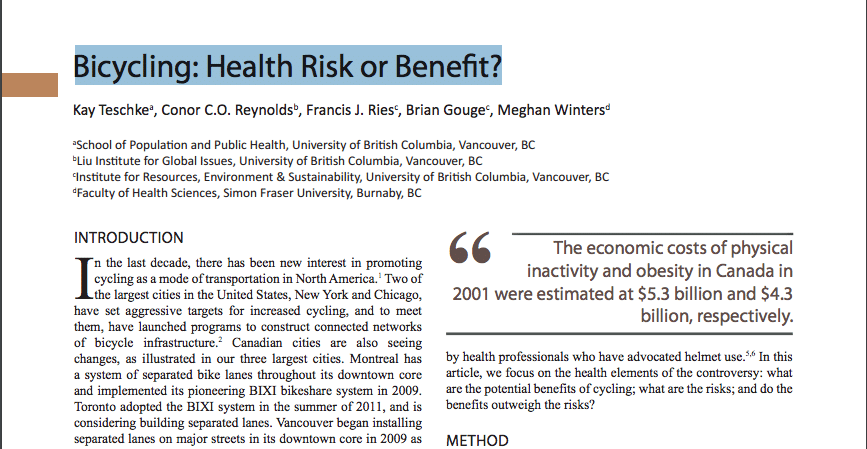Communities across BC are motivated to promote cycling as a mode of transportation.
The motivations for these changes are multifaceted. At the municipal level, they include the impossibility of managing traffic congestion via increased roadways, green city strategies aimed at reducing air pollution and greenhouse gases, and a recognition that the vitality of cities is better promoted by people who are not enclosed in vehicles, but walking, cycling, and interacting with each other.
In the public health realm, “active transportation” (physically active travel modes such as walking and cycling) has become a focus of attention following research showing that the design of cities and the connectivity of streets affect both our likelihood of walking and our health.
Despite the many motivations, promotion of cycling has been controversial. In this article, we focus on the health elements of the controversy: what are the potential benefits of cycling; what are the risks; and do the benefits outweigh the risks?




